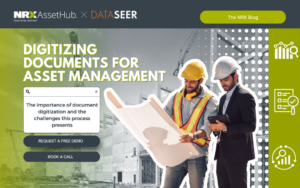Introduction to Greenfield and Brownfield Projects in Asset Management

Data Management Challenges in Greenfield Projects
Though Greenfield projects might appear simpler because they start from scratch, their data management challenges can be surprisingly complex. Typically, EPC firms provide the necessary asset and maintenance data. However, a major issue often arises: data validation.
Validation Against Drawings
Firstly, data validation against technical drawings is crucial. In Greenfield projects, the data often comes in standardized formats from various sources. However, this data is rarely validated against the actual drawings. Without this validation step, inconsistencies can easily occur between what was planned and what is physically installed. This often leads to costly maintenance problems later on.
Consistency of Data
Additionally, data consistency becomes another significant challenge. Since many vendors are usually involved, the data from these different sources often lacks standardization. This inconsistency can make it difficult to establish an Asset Hierarchy or register assets correctly in the system from the outset.
CMMS Reliability
Furthermore, setting up a reliable Computerized Maintenance Management System (CMMS) or Enterprise Asset Management (EAM) system becomes even more challenging without properly validated data. For instance, tasks such as creating Bills of Materials (BOMs), Asset Registers, or Preventive Maintenance Plans become difficult without consistent, well-organized data.
In short, while Greenfield projects provide a fresh start, skipping early data validation can lead to significant inefficiencies and challenges down the line.

Data Management Challenges in Brownfield Projects
Brownfield projects bring their own unique set of data challenges, primarily due to the age and inconsistency of the data. The main difficulty lies in managing legacy systems where data has been accumulating for years, often stored in different and outdated formats.
Incomplete and Inconsistent Data
Firstly, one of the most significant problems is dealing with incomplete or inconsistent data. Legacy data often doesn’t align with the current technical drawings. In many cases, historical data is scattered across various formats. This can include paper documents, scanned PDFs, or even the information stored in the memories of long-time employees. Converting this unstructured data into usable formats can be both time-consuming and prone to errors.
Data Extraction and Digitization
In addition to this, digitizing and extracting data from legacy documents such as P&IDs, isometric diagrams, or plot plans presents another challenge. However, modern automation tools leverage AI to rapidly extract tags and symbols from these documents, significantly reducing the time spent on manual data extraction by up to 95%. This automation helps accelerate the creation of asset registers, making the process much faster and more accurate.
Working with Historical Data
Lastly, revising and standardizing historical data is a continuous effort in Brownfield projects. Without a well-defined data governance strategy, managing these updates can easily lead to scope creep, delays, and inaccurate cost estimates.
In summary, Brownfield projects require a strategic approach to tackle the complexity of legacy data, ensuring efficient data management and minimizing risks related to outdated information.

Conclusion
In summary, Greenfield projects provide a fresh start, but skipping early-stage data validation can lead to operational inefficiencies later. On the other hand, Brownfield projects face unique challenges with legacy data, but these can be addressed through digital transformation and advanced data extraction tools.
In the next blog, we’ll dive deeper into how organizations can approach effective data management to ensure project success by leveraging modern tools. Stay tuned!

How Can We Help You?
HubHead and DataSeer’s AI Service combines human-level understanding with machine speed to build a scalable knowledge data store of engineering designs. By integrating these solutions with your existing EAM/CMMS systems and creating a digital twin, you can enhance decision-making and streamline your maintenance processes. Contact us for a free demo or book a call.
Digitizing Documents for Asset Management
Embracing Automation – The Future of Data Extraction
The Need for User-Centered Design in Data Extraction Technologies
Share this article




